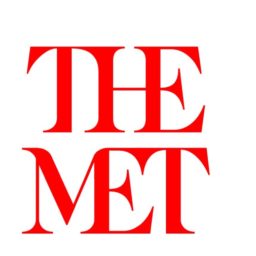Need Help?
For individual research help, schedule an appointment to meet with a librarian.
Finding & Evaluating Online Resources
Suggestions for finding online articles and information on your artist and work(s) of art can be found here. It is crucial when using resources from the web, that you *know your source*! If you find articles from one of the library's databases, you can be relatively certain that information is good, and there are options to limit your results to scholarly/academic/peer-reviewed sources.
However, looking through general websites on the web is not as easy. You will need to think about the author of the information and the organization behind the website and decide whether it is reputable or not. The museum websites listed below are examples of public websites that have solid background information on many art objects.
Please see How to Identify Scholarly Information for more information.
Art History Databases
The best way to locate articles on artists and their work is through the library databases. Go to Databases by Subject and look under the category Art & Architecture (ART, ARC) to find a list of relevant databases. You can also perform a search in the databases below.
Remember not to write sentences in the search box. Search by topic or keyword.
Look for additional keywords or subjects offered. Also look for toolbars that provide print, email, and citation options.
- Art & Architecture Source (EBSCO) This link opens in a new window Covers a broad range of related subjects from fine, decorative and commercial art, to various areas of architecture and architectural design. Includes Art & Architecture Complete. (NVCC)
- Artstor This link opens in a new windowArtstor features millions of high-quality images and media. All content is rights-cleared for education and research — you are free to use it in classroom instruction and handouts, presentations, student assignments, and other noncommercial educational and scholarly activities.
Artstor is now part of JSTOR. (NVCC) - JSTOR This link opens in a new window Scholarly journals; does not include the most recent few years. (NVCC)
- Oxford Art Online - Grove Art Online This link opens in a new window 30,000 signed articles and images on visual arts, over 6,000 subject entries and 20,000 biographies, and 7,000 searchable images. This resource also includes the Encyclopedia of Aesthetics (2nd edition), The Oxford Companion to Western Art, and The Concise Oxford Dictionary of Art Terms. (NVCC)
- Academic Search Complete (EBSCO) This link opens in a new window A multi-disciplinary database which offers information in many areas of academic study. This database supports high-level research in the key areas of academic study by providing access to journals, periodicals, reports, books and more. (VIVA)
- Associates Programs Source (EBSCO) This link opens in a new window Journals on subjects commonly taught in community colleges, including accounting, agriculture, automotive, child care, cosmetology, culinary arts and food service, forestry, graphic arts, hospitality management, interior design, journalism, plumbing, heating & air conditioning, veterinary technology and welding. (VIVA)
- Fine Arts (Gale OneFile) This link opens in a new window (Formerly Gale Fine Arts & Music Collection) covers 150 full-text journals that supports research in areas such as drama, music, art history, and filmmaking. (NVCC)
- Humanities International Complete (EBSCO) This link opens in a new window Provides citations and summaries for articles, essays and reviews, as well as original creative works including poems, fiction, photographs, paintings and illustrations. Indexes over 2,000 journals, books and other publications, with full-text for over 700 of them. (VIVA)
- MasterFILE Premier (EBSCO) This link opens in a new window Reference books, magazines, journals, newspapers and primary documents. Includes an Image Collection of photos, maps and flags. Covers a variety of topics. (VIVA)
Museum Websites
Though it may be tempting to just do a search in Google or Wikipedia for your artist and their work, solid sources for background information on your topic may be found on a museum website. These museums employ art historians whose job it is to research the artists and movements owned and exhibited by the museum. This means that the information found on these websites is of good quality and would be considered reputable. Listed below are two examples of reputable websites.
- National Gallery of Art
 The official website for the National Gallery of Art in Washington D.C.
The official website for the National Gallery of Art in Washington D.C. - Metropolitan Museum of Art
 The official website for the Metropolitan Museum of Art in New York City. The Met's collection is expansive and includes art from ancient through modern times.
The official website for the Metropolitan Museum of Art in New York City. The Met's collection is expansive and includes art from ancient through modern times.
